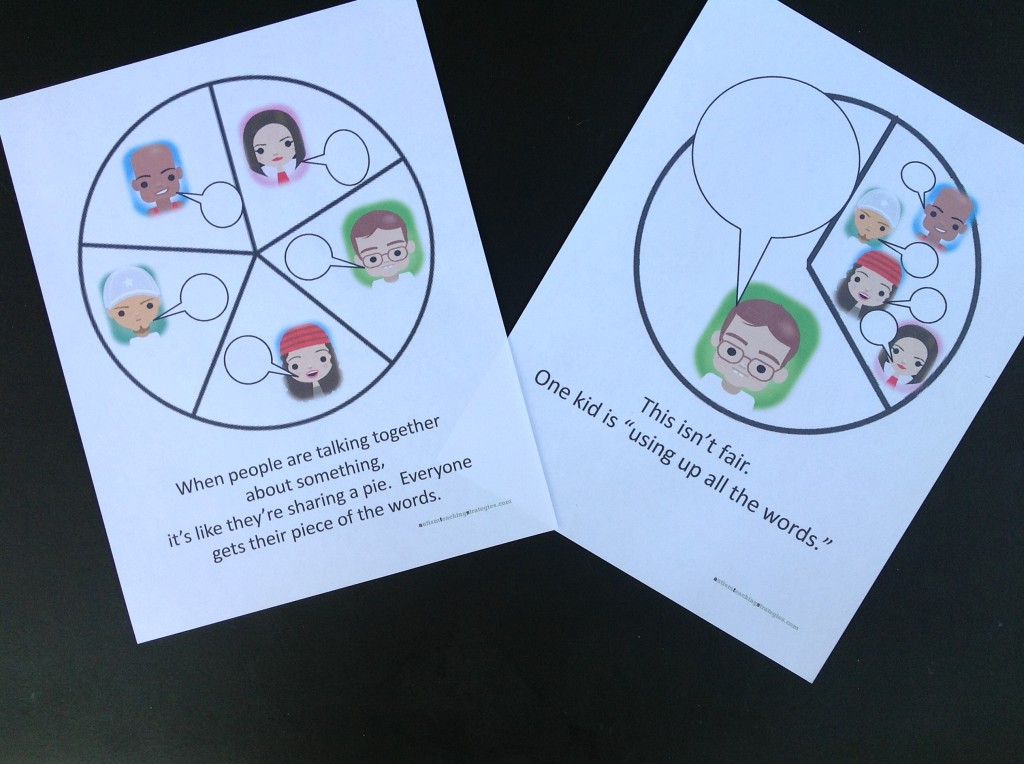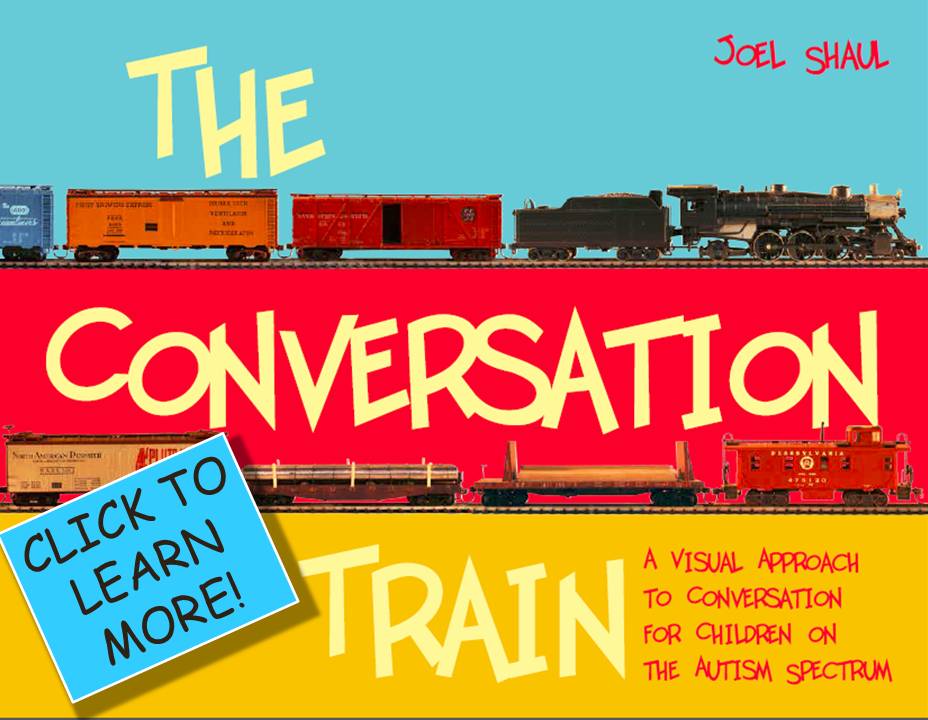
Children with autism who talk too much or too little in group situations
Neurotypical people find this skills difficult also! Remember that person who would not stop talking at the last party you went to? Young people with autism spectrum disorders can find reciprocal conversation skills particularly perplexing. They may say little or nothing on the playground or in class discussions. Or they may hold forth in a lecture of monologue fashion, not noticing the signs that others are becoming impatient.
Often, explaining a social skill combined with a meaningful visual will make a lot more sense for a child on the autism spectrum. This particular visual can be very helpful. If you make a few copies of the pie chart sheets below, I believe you will use them often.
How to create the pie chart visuals:
Follow the pdf download instructions below:
Pie chart prompts & directions
Grafico para la toma de turnos y conversaciones proporcionales en grupos
Polish language translation
How to use the pie chart visuals:
*Use simple language while describing the sheets. For example: “When people talk together, it’s like people sharing a pie [or cake or whatever in case the kid does not like pie!]. Everybody gets their turn to take their share. If one person is talking too much and not letting others talk, it’s not fair. He is “using up all the words.” Also, if somebody is just listening and is not sharing their own thoughts and words with the others, that’s not good. Everybody’s ideas are important.”
*One way to help a child who lectures and monologues in your class or group is to ask him to become your “helper.” Prepare for him the blank circle sheet below, and divide it into the number of kids who are present in your class or group. If you like, you can write into each “slice” the names of each person present. Then, you can ask the child to shade in with a pencil the various slices as the various children speak. This directs the attention of the monologuing child towards what others are saying and raises his awareness of proportion and reciprocity in group conversation.
I wish you success with this simple visual technique for helping kids with ASD to have better group conversation skills.
Joel Shaul, LCSW
Here is a related conversation social skills resource for reciprocity in conversation, but for when just two people are talking.
Using a Toy Balance for Talking Back & Forth
Your comments on these resources are most welcome, and often helpful. Click HERE to send an email.




